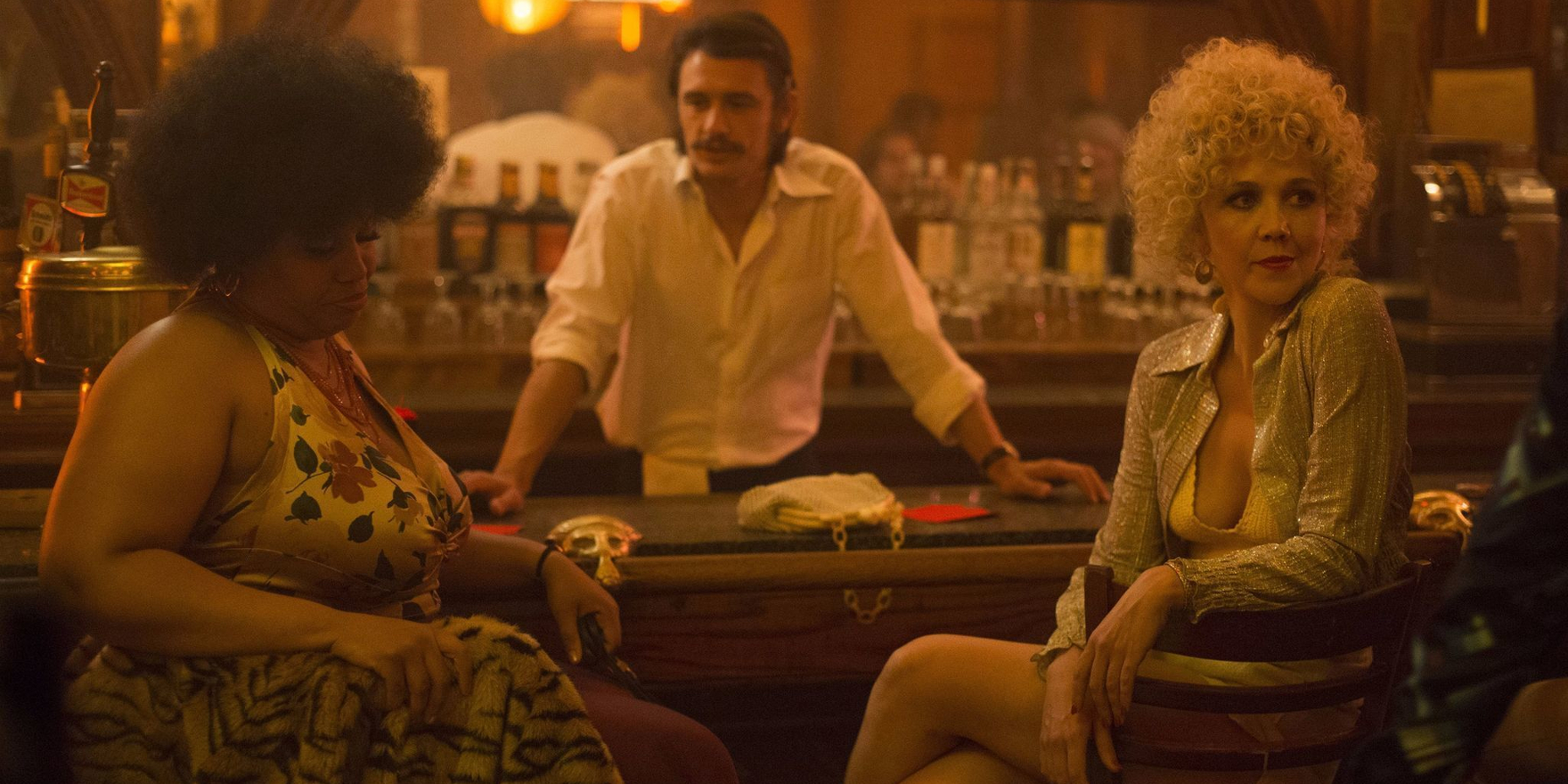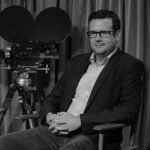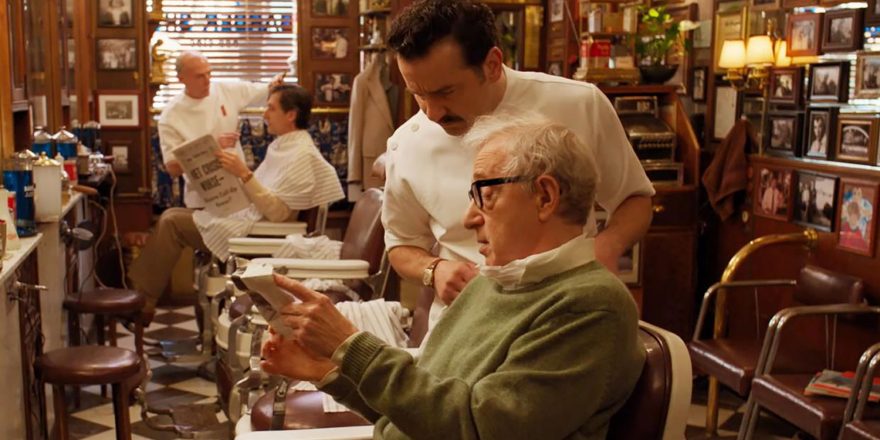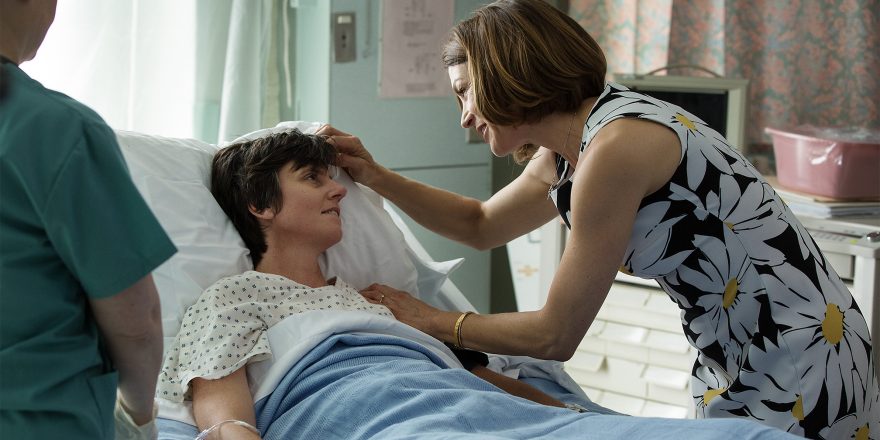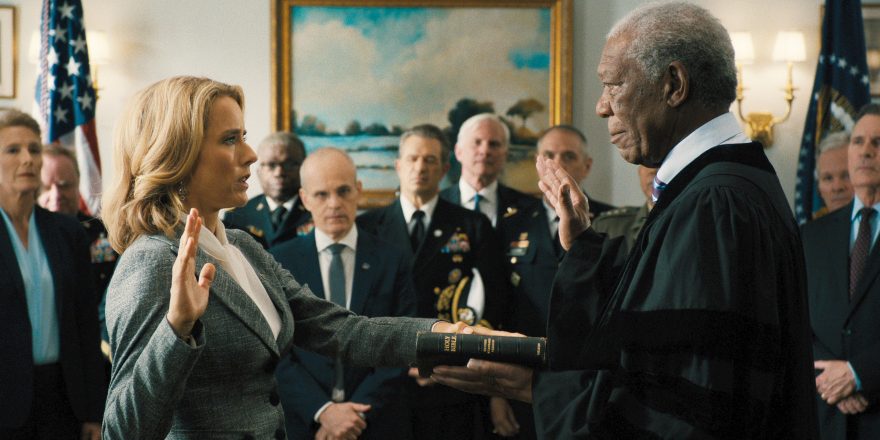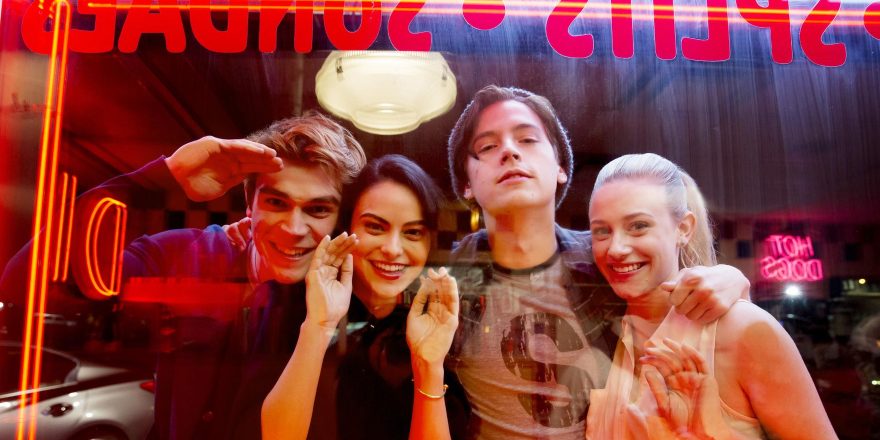The idea of writing a column on the “best” television shows of the year has never been more ridiculous than in 2017, when it’s more impossible than ever to keep up with what’s out there on the networks, cable, streaming, etc. … my DVR is crammed with shows I want to get to but haven’t had time for, and they don’t even begin to scratch the surface of the current TV landscape. So I’d define this more as a “favorites” list, since I am woefully unqualified to say what the 10 “best” shows of the year are – as is everyone else writing about TV, frankly. I made one rule for myself, which was to exclude any series I’ve already written about – I wanted to open up space for more titles, so just take it for granted that The Fosters, Madam Secretary, NCIS: New Orleans, One Mississippi, Riverdale, and many of the other shows I’ve celebrated here would certainly rank alongside the following among my picks for the top shows of 2017. So in alphabetical order, here goes:
Alias Grace
The second series this year based on a Margaret Atwood novel is even better than the first, thanks to the uniformity of vision and dramatic force that comes from three strong voices responsible for every episode: Atwood, screenwriter Sarah Polley, and director Mary Harron, doing the best work of her career. Based on the true story of an Irish immigrant and servant accused of murder in 1840s Canada, the series feels as every bit as modern and relevant as the acclaimed Hulu series based on Atwood’s The Handmaid’s Tale in its examination of the ways women – particularly single, working women – are a threat to and threatened by the patriarchy. Without forcing its points or contriving any elements of the drama for the sake of ideology, it rips into the ways sex is weaponized by the powerful with a vengeance made all the more potent by its restraint – Harron’s direction is impeccably calibrated to slowly, steadily ramp up the tension without the audience even being aware of what she’s doing until she’s already done it. Added bonus for cinephiles: David Cronenberg appears on the series in a supporting role!
Blue Bloods
This combination of two network TV staples – the family drama and the procedural – plays both genres off of each other in ways that are consistently productive and surprising; the show started strong and has only gotten richer and more ambitious with every passing season. It’s one of those series that’s taken for granted because the talent both in front of and behind the camera makes everything look effortless; the cast, led by Tom Selleck, Donnie Wahlberg and Bridget Moynahan, is uniformly superb, and the writers dependably breathe new life into the cop show format with comprehensive research and a complex interplay between the characters’ professional and personal lives. Perhaps the best reason to watch the show from a filmmaking perspective is the fact that so many of its episodes are helmed by one of the best directors currently working in movies or television, David Barrett. Barrett is a master of mise-en-scène who beautifully integrates color, movement and framing to convey psychology in the dramatic scenes and elicit an almost physical reaction from the audience in the action set pieces; yet his approach is so inextricably linked to his scripts’ internal mechanisms that the style borders on being completely invisible. It’s the kind of craft the masters of the classical Hollywood studio system like Michael Curtiz and Victor Fleming were known for, but which is in less ample supply these days – making Barrett’s talent all the more admirable and valuable.
Chicago Fire, Chicago P.D., and Chicago Med
As someone who spent most of the first 20 years of his life living in and around the Windy City, and as an enormous fan of writers Michael Brandt and Derek Haas, I’m admittedly an easy mark for the Chicago franchise they’ve created under the umbrella of TV uber-producer Dick Wolf. But I don’t think you have to be from Chicago to appreciate the Altman-esque tapestry Brandt and Haas, along with writer Matt Olmstead and various showrunners, have woven across the three series over the course of the past five years. The shows work independently but gain resonance and impact when viewed cumulatively, and in their empathy and intelligence they recall the best of classic network TV like Hill Street Blues and St. Elsewhere. They’re also as beautifully directed as they are written and acted; one of my favorite directors is Sanford Bookstaver, who’s done great work across the three series and brings as much visual dynamism to a standard-issue expository dialogue scene as he does to fires and car chases. His direction on something like this season’s “An Even Bigger Surprise” episode of Chicago Fire is a clinic in how to constantly keep the frame alive and the action propulsive without becoming disorienting; his camerawork and cutting are energetic but never chaotic, stylized yet totally organic.
The Deuce
The latest rumination on money, power, and the struggles of those with neither from The Wire and Treme creator David Simon, this meticulous evocation of 1971 Times Square and its role in the creation of the billion-dollar adult film industry is a grand pop epic reminiscent of Scorsese’s GoodFellas or Paul Thomas Anderson’s Boogie Nights, though it ultimately has a far more somber and deglamorized tone than either. Working with co-creator George Pelecanos and one of the best writers’ rooms in television (one that includes, among others, Clockers author Richard Price), Simon digs deep into the economic, social and psychological factors behind sex work and the men and women who practice it, patronize it, profit from it and are destroyed by it. The period recreations are astonishing (as is the combination of visual effects and acting chops that enables James Franco’s exceptional performance as twin brothers), and the direction impeccable. Michelle MacLaren’s pilot and finale are especially striking; she channels Taxi Driver-era Scorsese and the DePalma of Blow Out to construct a haunting yet dynamic netherworld of climbers and those being climbed over.
The Good Doctor
The idea of another medical show isn’t something I was very excited by when The Good Doctor premiered a couple months ago, and its premise – Freddie Highmore as an autistic savant who becomes a head surgeon at a hectic hospital – sounded awfully gimmicky to me. That was before I actually caught up with the series, which has proven to be rich in journalistic detail about both the business and the science of medicine – an aspect of the show that is endlessly fascinating week after week, and often illustrated by some of the most innovative visual effects I’ve seen all year – and exceptionally moving as a meditation on how to do and be good. Highmore is, as one might expect, incredible in the lead role, but his supporting cast deserves accolades too – the always reliable Richard Schiff exudes kindheartedness and intelligence, and the rest of the actors who fill out the hospital staff and love interests are equally strong.
The Last Tycoon
Classical aesthetics and modern digital technology intersect with dazzling results in this literary adaptation from Billy Ray. The series takes place in 1930s Hollywood at a time when the industry is being rocked by aesthetic, economic and labor issues as well as foreign policy concerns, and Ray deftly juggles the complicated issues and period details with concision and clarity. He uses F. Scott Fitzgerald’s unfinished novel as a jumping off point for an expansive study of Hollywood in transition that works as both a thoroughly entertaining self-contained drama and as a provocative commentary that one can contrast and compare with the present-day industry. The sophistication of Ray’s writing is matched by the elegance of his visual style, which merges aspects of Coppola and Lumet’s 1970s output – particularly when it comes to their formal compositions and lighting that emphasizes shifting power dynamics among the characters – with the pop pleasures of Singin’ in the Rain and the style of the 1930s musicals and melodramas that the series so lovingly recreates. Director of photography Danny Moder gives The Last Tycoon the depth and texture of a high-end theatrical feature, shooting at 4K and lighting frames within frames with details that seem to extend into infinity – I’ve rarely seen a television show that’s so pleasing to the eye, yet there’s nothing intrusive or self-conscious about Moder’s technique.
The Quad
For flat-out entertainment value, this drama set at a historically black college is tough to beat – it makes the most of the melodramatic possibilities offered by the constantly multiplying romances, friendships, and academic and athletic rivalries the setting provides. Yet it’s as topical and substantive as it is giddily absorbing – the writers take full advantage of their milieu’s potential for exploring intersections between race, sex and class, seamlessly integrating trenchant social commentary with the sudsier elements of the drama. The series regularly finds unique and insightful angles on subjects both contemporary and shopworn, and combines disparate moods and styles with ease – in the “#GoTellItOnTheMountain” episode, for example, writers Adrian Dukes and Brian Egeston juggle an unsettling story about campus sexual assault with various interpersonal dramas and even a couple musical numbers, all of which director Mary Lou Belli orchestrates with impressive precision and balance.
Santa Clarita Diet
This gory comedy about a suburban wife (Drew Barrymore) who becomes a zombie and enlists her husband (Timothy Olyphant) to help her adjust to her new “life” as one of the undead pulls off the most difficult and hilarious tonal balance of any show I’ve seen this year. The closest I can come to using past series or films as reference points is to say that it’s like a season of Desperate Housewives directed by Sam Raimi, but that description doesn’t really do justice to the show’s wry and often genuinely suspenseful flavor. Nor does it acknowledge the two great performances at its center: Barrymore is looser and more playful than she’s been in anything since her days as a child actor in E.T., and Olyphant proves himself to be capable of juxtaposing broad comedy and subtle anxiety with equal skill at both. At its best, as in the “The Farting Sex Tourist” episode directed with delicate comic timing by frequent Barrymore collaborator Ken Kwapis, the series rides a line between shock value and warmth unlike anything else on television.
Supernatural
Forget about Stranger Things. The best horror-fantasy series on television is on the CW, not Netflix, and it assimilates its 1980s influences into its DNA rather than wearing them on its sleeve. In fact, forget about horror-fantasy – in the consistency of its literary invention, the liveliness of its performances, and its ever-expanding and deepening mythology, Supernatural is one of the best shows in any genre. Most series peak somewhere around their second or third season, then slowly (sometimes not so slowly) decline in quality and passion until their audience dwindles. Supernatural, however, has done what I would have thought was impossible: in its 13th season, it’s smarter and more energetically acted – and takes more chances – than ever. Its creators seem liberated by the freedom offered by a long-running series with a devoted audience, and thus often take the story of the ghost- and demon-hunting Winchester Brothers in audacious directions, playing with both narrative form and visual style in ways that keep it the youngest, freshest show on the air no matter how long it endures.
Twin Peaks: The Return
What can I say about this show that better writers than myself like Vadim Rizov in Filmmaker Magazine or Aliza Ma in Film Comment haven’t? (For that matter, it’s already been discussed twice here on this very website by Matthew Wilder and Brea Grant.) Not much, but there’s no way this series – the most rewarding, original, maddening, brilliant, disturbing, hilarious thing I’ve ever seen on television – wasn’t making this list. More layered, relevant, and resonant than any novel I read this year or any film I saw, this is a work of art for the ages.


